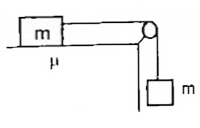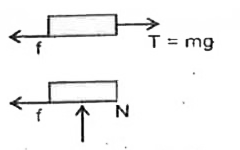Text Solution
Verified by Experts
|
Topper's Solved these Questions
LAWS OF MOTION
FIITJEE|Exercise SOLVED PROBLEMS (OBJECTIVE)|17 VideosView PlaylistLAWS OF MOTION
FIITJEE|Exercise COMPREHENSION - I|6 VideosView PlaylistLAWS OF MOTION
FIITJEE|Exercise COMPREHENSION-III|2 VideosView PlaylistKINEMATICS
FIITJEE|Exercise NUMERICAL BASED QUESTIONS DECIMAL TYPE|5 VideosView PlaylistMAGNETIC
FIITJEE|Exercise Numerical Based Type|2 VideosView Playlist
Similar Questions
Explore conceptually related problems
Knowledge Check
A
B
C
D
Submit
A
B
C
D
Submit
A
B
C
D
Submit
Similar Questions
Explore conceptually related problems
FIITJEE-LAWS OF MOTION-SOLVED PROBLEMS (SUBJECTIVE)
- Two blocks, each of mass m are attached with a massless and inextensib...
04:07
|
Playing Now - A pulley fixed to the ceiling of an elevator car carries a thread whos...
15:08
|
Play - Two masses m(1) and m(2) are connected by means of a light string, tha...
Text Solution
|
Play - In the given figure all the surfaces are smooth. Find the time taken b...
07:57
|
Play - A bead of mass m is fitted on a rod and can move on it without frictio...
03:23
|
Play - A block of mass 6 kg is kept on rough surface as shown in figure. Find...
04:16
|
Play - Two identical blocks A and B are placed on a rough inclined plane of i...
05:34
|
Play - Masses M(1),M(2) and M(3) are connected by string of negligible mass w...
05:23
|
Play - A block of mass 2 kg is pushed against a rough vertical wall with a fo...
07:06
|
Play - A body of mass M is moving in +x-direction with acceleration a. Find t...
05:35
|
Play - In the figure masses m(1), m(2) and M are 20 kg, 5 kg and 50 kg, respe...
Text Solution
|
Play

